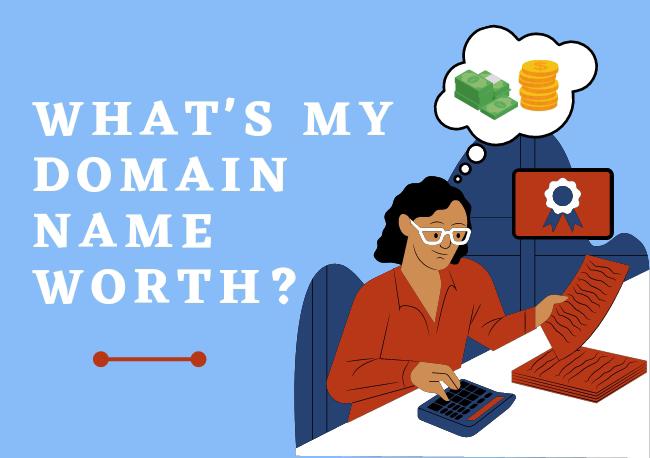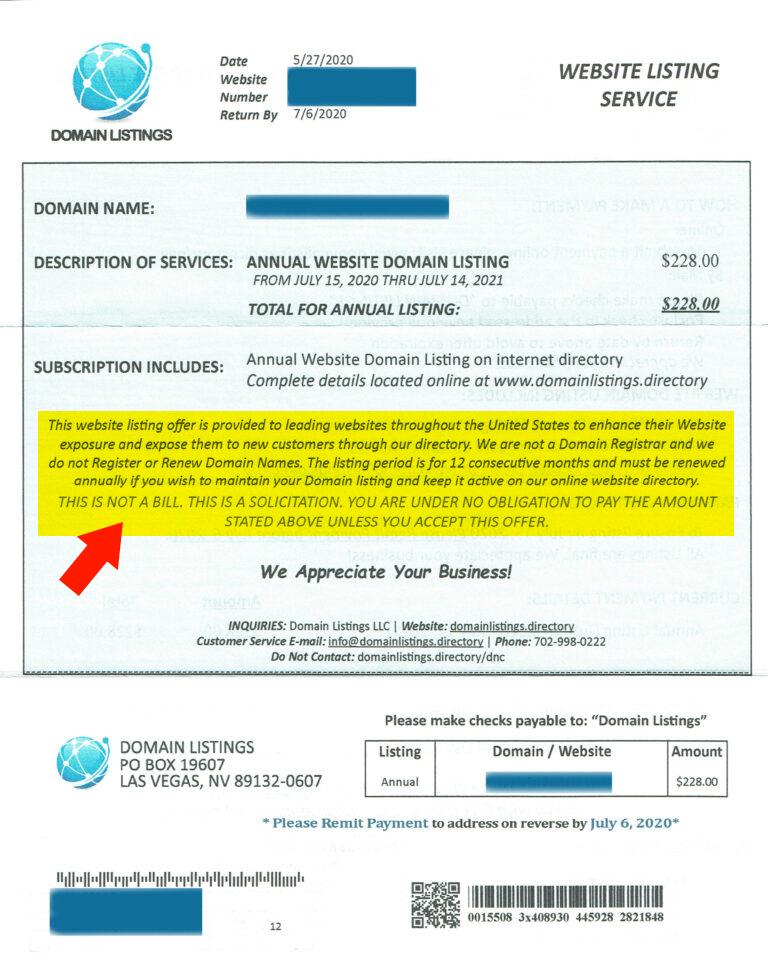Table of Contents
- Understanding the Value of Your Domain Name
- Exploring Free Platforms to Sell Your Domains
- Effective Strategies for Marketing Your Domain Listings
- Tips for Crafting Persuasive Domain Descriptions
- Navigating Negotiations and Closing the Sale
- Q&A
- Future Outlook


Understanding the Value of Your Domain Name
In the realm of digital real estate, the significance of a domain name often goes underestimated. A well-chosen domain name does more than just serve as your online address; it embodies your brand’s identity and is pivotal in establishing your credibility. The right domain name can enhance user recognition, improve brand recall, and ultimately drive traffic to your website, translating into higher sales or engagement. Hence, understanding the true worth of your domain name is crucial for any aspiring entrepreneur or website owner.
When evaluating a domain name’s value, it’s essential to consider several key factors:
- Short and Memorable: A concise and catchy domain is more likely to be remembered and shared.
- Keyword Rich: Incorporating relevant keywords can boost SEO and increase visibility.
- Extension Matters: While .com remains king, other extensions like .net, .org, or niche-specific ones can still hold value.
- Brandability: A name that clearly reflects your brand ethos can enhance customer loyalty.
- Aged Domains: Older domains often carry a higher value due to established credibility and backlinks.
To better visualize the potential value of your domain names, consider the following table that categorizes different domain types and their typical market values. This can serve as a reference point when you’re looking to sell or buy domains:
| Domain Type | Typical Market Value |
|---|---|
| Premium .com | $5,000 – $100,000+ |
| Short ccTLD | $1,000 – $50,000 |
| Generic Keywords .net | $500 – $10,000 |
| Branded Names | $1,000 - $20,000 |
| Expired Domains | $100 – $5,000 |
Exploring Free Platforms to Sell Your Domains
Selling your domains doesn’t have to be a costly affair. There are numerous free platforms that allow you to list and sell your domains without charging listing fees or commissions. These platforms cater to both novice sellers and seasoned domain investors, offering user-friendly interfaces and essential tools to showcase your domain portfolio effectively. By leveraging these resources, you can turn your unused domains into cash without any upfront investment.
Here are some of the top platforms you can explore:
- GoDaddy Auctions: While GoDaddy does have premium services, you can list domains for free and let buyers come to you.
- Namecheap Marketplace: An easy-to-navigate site where you can sell your domains, complete with browsing options for potential buyers.
- Flippa: Known for digital assets, Flippa allows free listings, making it easy to connect with interested buyers.
- Sedo: Offers a professional marketplace for domain selling, giving you a chance to reach a broad audience.
Utilizing these platforms effectively can significantly enhance your chances of making a sale. Make sure to optimize your listings with relevant keywords and detailed descriptions to attract interested buyers. Additionally, consider showcasing the potential uses for the domain, which can help buyers visualize its value. Keep an eye on market trends and adjust your pricing strategy accordingly to ensure competitiveness in the ever-evolving domain marketplace.


Effective Strategies for Marketing Your Domain Listings
Marketing your domain listings effectively involves a combination of strategic outreach and leveraging the right platforms. Start by utilizing popular online marketplaces such as Sedo, Flippa, or GoDaddy Auctions, which cater specifically to potential buyers actively looking for domains. Additionally, don’t underestimate the power of social media. Platforms like Twitter, Facebook, and LinkedIn can provide excellent exposure; create engaging posts that highlight your domain’s value, including its relevant keywords to attract organic interest.
Another powerful strategy is to optimize your listings for search engines. Implement SEO best practices by including comprehensive descriptions, relevant keywords, and high-quality images where applicable. This not only improves visibility on search engines but also helps potential buyers understand the value of the domains you are offering. Tools like Google Trends can help you discover popular keywords related to your domains, enhancing your listing’s appeal. Here’s a simple table showcasing some effective SEO practices:
| SEO Practice | Description |
|---|---|
| Keyword Research | Identify relevant words or phrases to include in your listings. |
| Meta Tags | Create compelling titles and descriptions that include target keywords. |
| Quality Content | Write informative descriptions that resonate with potential buyers. |
Networking can also play a pivotal role in promoting your domain listings. Joining domain forums or groups, such as those found on Reddit or specialized domain selling communities, can connect you with potential buyers and allow you to showcase your domains. Participate in discussions, share your expertise, and periodically mention your available listings where appropriate. Always ensure that your interactions are valuable and not merely promotional; building genuine relationships can lead to fruitful sales opportunities.


Tips for Crafting Persuasive Domain Descriptions
Creating engaging domain descriptions is crucial for attracting potential buyers and making a standout impression. Here are some effective strategies to elevate your descriptions:
- Highlight Unique Features: Focus on what makes the domain special. Consider factors like its length, keyword relevance, or memorability. For example, if the domain has a distinctive extension (like .tech or .design), mention it upfront to draw attention.
- Define the Target Audience: Clearly state who would benefit from the domain. Whether it’s entrepreneurs, e-commerce businesses, or bloggers, identifying your audience helps potential buyers visualize the domain’s purpose and potential.
- Incorporate SEO Keywords: Integrating relevant keywords can enhance visibility. Research terms that your target market may use when searching for domains. This approach ensures that your description aligns with prospective buyers’ search intent.
Another effective technique is to keep your descriptions concise yet informative. Here’s a simple table format to display essential details about the domain:
| Feature | Description |
|---|---|
| Domain | example.com |
| Length | 10 characters |
| Keywords | example, demo |
| Extension | .com |
Lastly, a call to action can be a powerful component. Encourage potential buyers to contact you for more information or offer a special deal for quick inquiries. Creating a sense of urgency can also motivate action. For instance, highlight that the domain is a limited-time offer, making it more appealing to those looking for immediate solutions.


Navigating Negotiations and Closing the Sale
When entering the negotiation phase of domain selling, it’s crucial to approach potential buyers with a well-defined strategy. Start by understanding your domain’s value—consider factors like keyword optimization, brand potential, and traffic statistics. Prepare a compelling narrative around your domain’s strengths to attract interest. In discussions, always keep your emotions in check; being too attached to your domain can hinder your ability to negotiate effectively.
During the negotiation process, aim for a win-win scenario. Suggestions for maintaining a positive atmosphere include:
- Listening actively to buyer concerns and objectives
- Finding common ground to build rapport
- Being flexible with pricing and terms while maintaining a baseline for what you are willing to accept
Lastly, closing the sale requires decisiveness. Once the terms are agreed upon, draft a clear and concise purchase agreement. Ensure both parties understand the payment terms, domain transfer process, and any contingencies. To make everything smooth, consider the following table outline for tracking important sale aspects:
| Aspect | Details |
|---|---|
| Buyer Information | Include contact details and verification of funds |
| Agreed Price | Confirmed final sale price after negotiations |
| Payment Method | Specify PayPal, Escrow, etc. |
| Transfer Date | Set a deadline for the domain transfer |
Q&A
Q&A: Selling Domains for Free
Q1: What does it mean to sell domains for free? A1: Selling domains for free typically refers to platforms or methods that allow you to list and sell your domain names without incurring any upfront costs or fees. This could mean you can create listings on certain marketplaces or auction sites gratis, maximizing your potential profit without the burden of extra expenses.Q2: How can I start selling my domains for free? A2: To kick off your journey in domain selling, first, ensure that you have valuable domain names that appeal to potential buyers. Then, sign up on domain marketplace platforms such as Sedo, Flippa, or Namecheap’s Marketplace, which allow creators to list their domains without fees. Simply create an account, provide details about your domain, and set your desired price.
Q3: Are there any hidden costs when selling domains for free? A3: While the listing may be free, it’s important to read the fine print. Some platforms might charge a transaction fee when the domain sells or may require a percentage of the sale price. Always review the terms carefully to ensure you understand any potential costs before selling.
Q4: What types of domains are most likely to sell? A4: Domains that are short, memorable, and keyword-rich tend to attract buyers quickly. Consider selling .com domains, as they are favored for their familiarity and credibility. Niche-specific domains can also fetch higher prices, particularly if they cater to trending industries or popular keywords.
Q5: How do I determine the value of my domain? A5: Assessing the value of your domain can involve various factors, including length, keyword relevance, extension popularity, and market demand. You can use tools like GoDaddy’s Domain Appraisal tool or Estibot to get a preliminary valuation. Additionally, researching recent sales of similar domains can inform your pricing strategy.
Q6: Can I promote my domain sale for free? A6: Yes, promotion doesn’t have to cost a dime. Utilize social media platforms, domain selling forums, and online communities to spread the word about your listings. Craft engaging posts that highlight the value of your domain, and don’t hesitate to leverage free online marketing strategies like blogging about your domains or utilizing SEO techniques for your listings.
Q7: What are some common mistakes to avoid when selling domains for free? A7: One pitfall is underpricing your domain, which can lead to losses. Avoid neglecting marketing efforts; simply listing is often not enough. Also, don’t forget to stay updated on domain trends and buyer demands. Lastly, be wary of scams; always verify buyers and use secure methods for transactions.
Q8: Is selling domains an effective side hustle? A8: For many, selling domains can indeed be a lucrative side hustle. With the right research, strategy, and persistence, individuals can turn valuable domain names into profit. While it may take time to see significant returns, the low initial investment makes it an enticing option for aspiring entrepreneurs.
Q9: What resources are available for beginners in domain selling? A9: Beginners can benefit from various online resources, including domain forums like NamePros or DNForum, where you can connect with experienced sellers. Websites offering educational content or courses on domain trading can also provide valuable insights. Additionally, following industry blogs and podcasts can keep you informed on the latest trends and tips in the domain market.
Q10: What’s the best piece of advice for someone just starting to sell domains? A10: Patience is key. Success in domain selling doesn’t happen overnight. Invest time in researching, building your portfolio, and connecting with other domainers. Stay persistent, and remember that understanding the market and positioning your domains correctly will ultimately yield better results.

